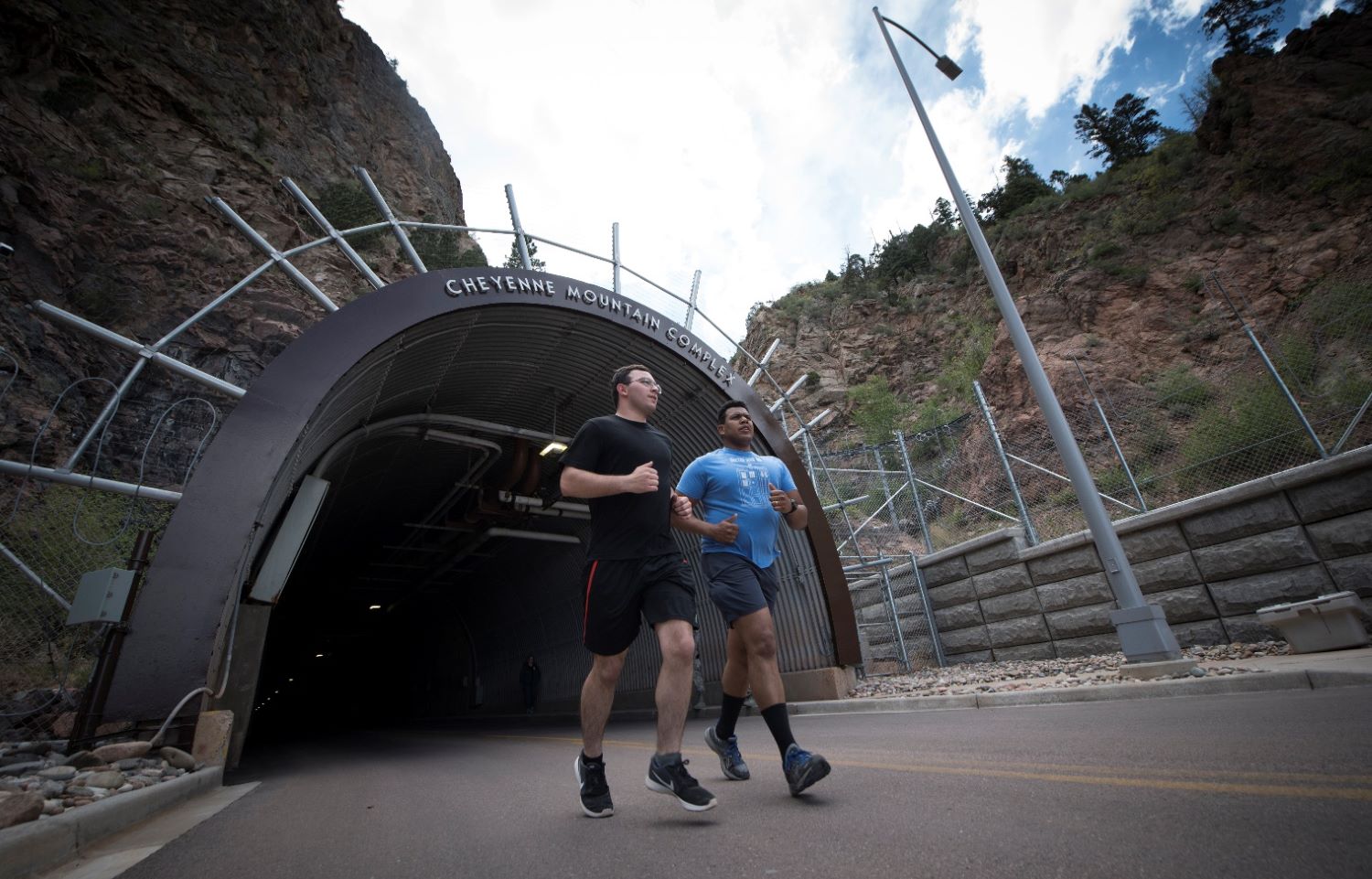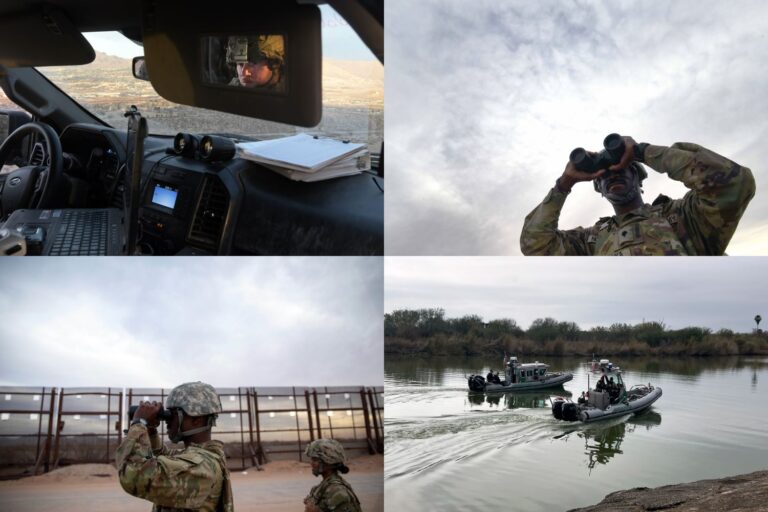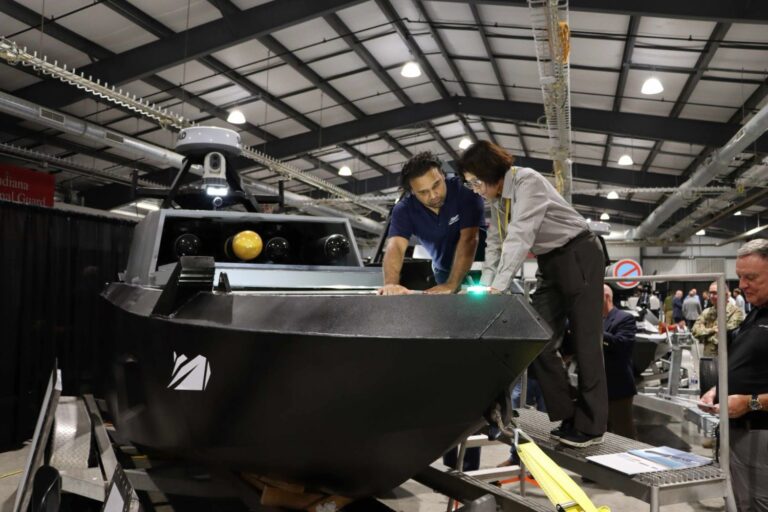Cheyenne Mountain Complex: From Iconic Bunker to Modern Military Hub
In the late 1950s, at the height of the Cold War, the need for a fortified command and control center became apparent as a defense measure against Soviet long-range bombers. The Army Corps of Engineers took charge of excavating Cheyenne Mountain, creating a robust operational center deep within its granite core.
Tucked away in Colorado Springs lies one of the most secure bases in the U.S.: the Cheyenne Mountain Complex. While its entrance might conjure images of the ‘stargate’ from the sci-fi series, offering passage to other galaxies, the reality is far less fantastical.
Since becoming operational in 1966, this facility has served as a vital military installation and nuclear bunker at the Cheyenne Mountain Air Force Station.
What Drove the Construction of Cheyenne Mountain Complex Inside a Mountain?
Built between 1961 and 1966, Cheyenne Mountain Complex was designed to be the headquarters for the North American Aerospace Defense Command (NORAD). It cost $150 million to build, which is equivalent to $1.5 billion in 2023.
NORAD was created in 1958 during a time of rising tension between the United States and the Soviet Union. It was a joint effort between the U.S. and Canada to keep an eye on the skies for enemy aircraft, missiles, and other threats.

During the Cold War, NORAD often tracked Soviet Tu-95 bombers, nicknamed “Bears,” as they tested North American defenses. In response, NORAD sent fighter jets to intercept and escort these bombers away, ensuring the defense system was always prepared and alert.
Many families-built fallout shelters to safeguard themselves from potential nuclear attacks during the Cold War, equipping these shelters with over a month’s worth of food and water.
Unlike these typical fallout shelters, the Cheyenne Mountain Complex was designed primarily to withstand a direct nuclear blast rather than just nuclear fallout. Its purpose was to ensure continuous operation and protection for individuals responsible for maintaining communications during a nuclear conflict.
The Cheyenne Mountain Complex, with its extensive and heavily fortified facilities deep within the mountain, contrasts sharply with the smaller, less robust family fallout shelters of the era.
After the Cold War ended, the number of probing missions decreased, but tensions have increased again in recent years. Under Vladimir Putin, Russian bombers have occasionally tested North American air defenses, leading NORAD to scramble fighter jets to intercept them. This shows that NORAD’s mission is still very relevant.
A notable recent event for NORAD happened on February 4, 2023, when it recorded its first-ever “kill” since it was established. On that day, NORAD’s F-22 fighters shot down a Chinese balloon that had entered U.S. airspace, highlighting the complex’s continued role in modern aerial defense.
The Role and Function of Cheyenne Mountain Complex
In particular, The Cheyenne Mountain Complex was built to handle extreme threats, including nuclear, electromagnetic, and biological attacks. Originally built to serve as the headquarters for NORAD and the United States Northern Command (USNORTHCOM), the complex was designed with an emphasis on resilience and security.
Located 2,000 feet (610 meters) beneath granite, the Cheyenne Mountain Complex has a huge underground area that’s 60 feet (18 meters) high and spans 4.5 acres (18,210 square meters). The facility is built to withstand extreme conditions with features like massive blast doors.
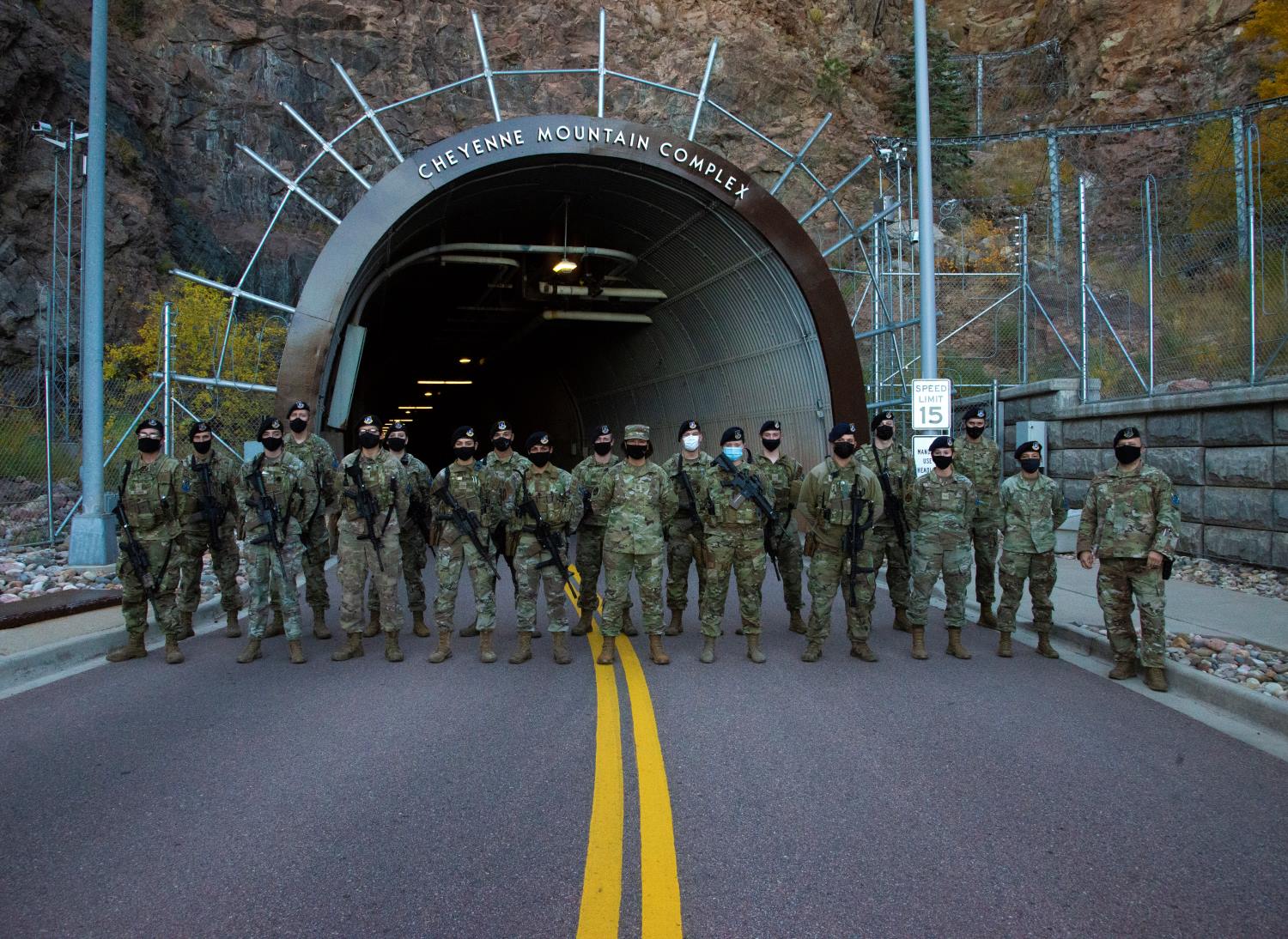
Each door weighs around 25 tons and can handle the impact of a 30-megaton nuclear explosion. These doors are about 12 feet (3.5 meters) tall and 4 feet (1.2 meters) wide, showing just how well the complex is protected.
The Cheyenne Mountain Complex in Colorado plays several important roles. It was originally built to shield key government and defense operations from a nuclear attack. Its design is so robust that it can withstand a 30-megaton atomic blast from just 1.24 miles away.
It plays a crucial role in early warning by monitoring North American airspace for missiles, space systems, and foreign aircraft.
Additionally, the complex functions as a training site for crew qualification, ensuring readiness for various scenarios. During a nuclear conflict, it provides a secure location for military strategizing and communication.
How the Complex’s City Facilities Operate
Spread over two hectares, this highly secure facility is built to withstand some of the most extreme conditions imaginable.
At the heart of the complex are 15 three-story buildings, each resting on a system of over 1,000 giant springs designed to absorb shock and minimize movement during seismic events or explosions.
These springs ensure that the buildings move no more than an inch, maintaining the integrity of the complex even in the event of a significant disturbance. Flexible pipe connectors further enhance the facility’s resilience, restricting operational impact due to any shifting.
The Cheyenne Mountain Complex is uniquely certified by the DOD to withstand electromagnetic pulses (EMPs), making it a rare high-altitude facility with this capability.

The complex is not just about defense; it also ensures the comfort of its occupants. It features makeshift sleeping quarters for most personnel and suites for high-ranking officers, ensuring that key operations can continue around the clock.
Additional amenities include a department store, a canteen, and health centers, both inside and outside the complex, providing essential services to those stationed there.
The civil engineering division, a critical part of the facility’s infrastructure, is safeguarded by an additional blast door, ensuring its protection in the event of an attack. These doors are ingeniously designed to unlock easily when needed, yet they can withstand the shockwave of an atomic explosion.
The facility also features a sophisticated system of explosion stopcocks with specialized filters, effectively capturing and neutralizing biochemical, radiological, and atomic contaminants in the air, ensuring the safety of all personnel within.
Outside the complex, the environment is equally well-planned, featuring essential and recreational facilities. Parking spaces and a fire station provide necessary support services, while leisure amenities such as Cheyenne Mountain State Park, picnic areas, and courts for racquetball, softball, sand volleyball, and basketball offer recreational opportunities for those stationed at the complex.
Access to the area is tightly controlled, with a military gateway limiting use of the NORAD Road from the State Highway 115 interchange, ensuring that only authorized personnel can approach the complex.
Self-sufficiency is a key aspect of the Cheyenne Mountain Complex, with its own power plant, heating and cooling systems, and water supply. The 21st Mission Support Group is responsible for maintaining these critical systems, ensuring maximum reliability.
The mountain springs within the complex produce more water than the facility requires, with a 1.5 million-gallon tank providing ample water for any emergency, such as a fire.
What’s more, the facility is equipped with a large diesel fuel tank, a massive battery bank, and backup power generators, ensuring continuous operation even in the event of a power outage.
Why This Building Is Known for Its Exceptional Security
Cheyenne Mountain’s underground position provides a formidable natural defense against aerial and surface attacks. The complex is shielded by two massive blast doors, each 3.5 feet thick and weighing around 23 tons.
These doors, which take approximately 45 seconds to close, were used only once during an emergency, such as the 9/11 attacks.
To mark the 20th anniversary of 9/11, Steven Armstrong, who was NORAD’s chief of plans and forces during the attack and is now the vice director of NORAD Operations and chief of NORAD Strategic Engagements, shared his experiences.
“We were in Cheyenne Mountain that morning actually doing an exercise. Vigilant Guardian was the name of the exercise back then, where it’s basically an escalation of Russian activities and U.S. activities that ultimately results in a nuclear exchange — we would do that exercise every year,” he said.
“Within a matter of hours, we had a couple hundred fighters available at our disposal to be able to put in air patrols up above the United States. And we started coordinating with the FAA to be able to get all the other air traffic down that was still flying. It took us literally hours to get all those civilian aircraft on the ground so that we could sanitize the airspace to be able to figure out if there were any bad guys still flying,” Steven Armstrong shared.
This suspension system allows the buildings to move up to an inch, absorbing shock from earthquakes or nuclear explosions. The structural integrity is further ensured by a 4,700-foot-long tunnel designed to redirect a nuclear blast way from the main areas of the complex.
The facility is engineered to endure a 30-megaton nuclear explosion detonated as close as 1.24 miles away. It is protected against electromagnetic pulses (EMPs) and other forms of electromagnetic energy through its rock cover and steel construction, which act as a Faraday cage.
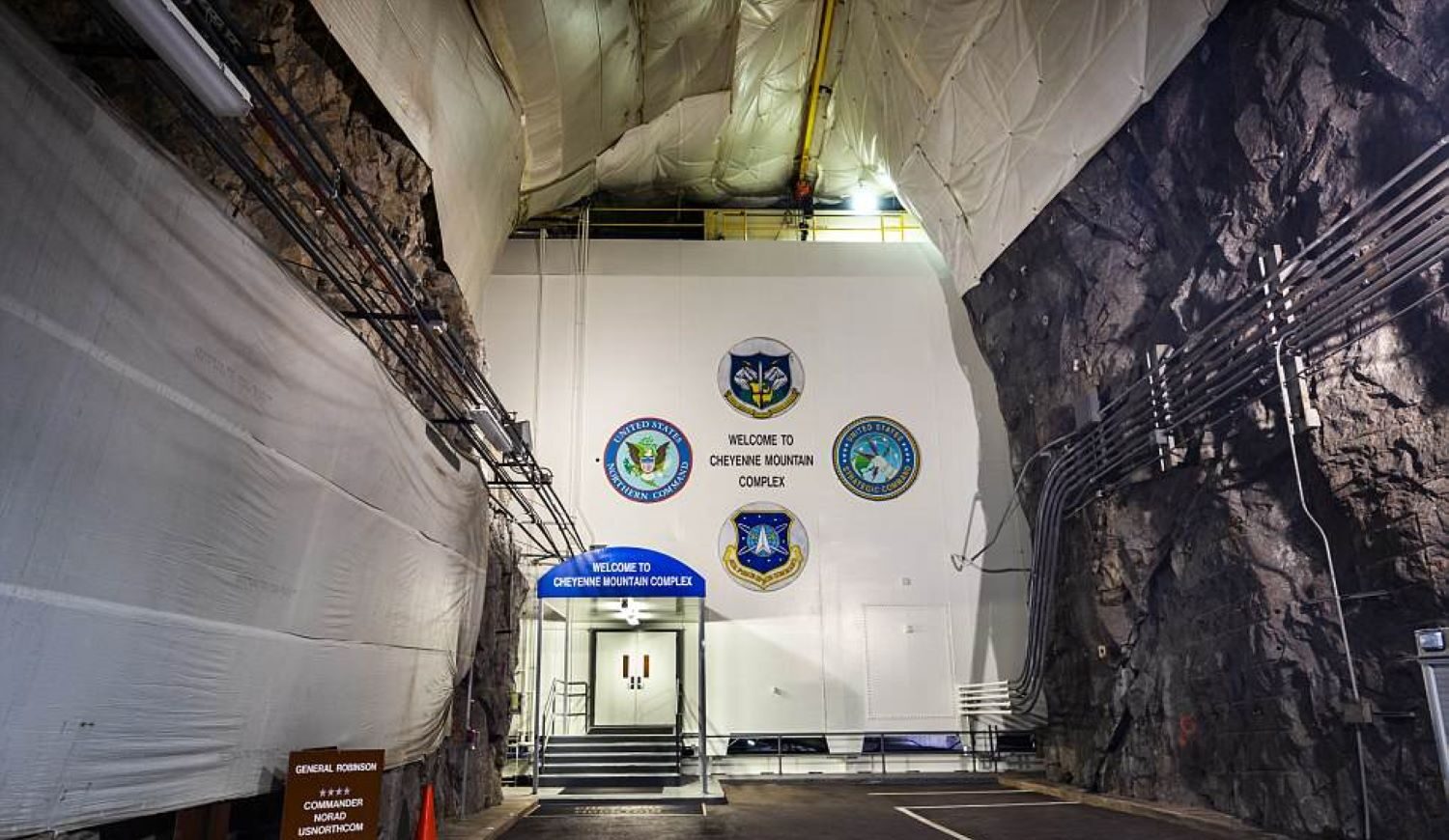
This design prevents EMPs from disrupting the facility’s electronic systems and communications, ensuring continuous operational capability even in the aftermath of a nuclear event.
Power supply is a critical aspect of the complex’s security. It boasts the largest uninterrupted power supply system in the U.S., featuring a massive battery bank and six generators capable of producing over 10 megawatts of power. A large reservoir carved into the rock holds 500,000 gallons of diesel fuel to power the generators.
The complex houses several operational centers vital for national defense. The Air Operations Center (AOC) monitors North American airspace, tracking over 2.5 million aircraft annually. The Missile Warning Center (MWC) identifies and assesses missile launches worldwide, while the Space Control Center (SCC) tracks over 8,000 space objects.
The NORAD/USSPACECOM Combined Command Center (CCC) coordinates activities across the operation centers and provides warnings and assessments to national authorities. The Combined Intelligence Watch Center (CWIC) and the National Warning Facility (NWF) support global threat analysis and emergency response.
The Space and Warning Systems Center (SWSC) manages mission-critical software, while the Weather Support Center (SOLAR) monitors weather patterns.
Who’s Operating Within the Cheyenne Mountain Complex Now?
The Cheyenne Mountain Complex, once a fully operational hub for NORAD, underwent significant changes due to cost-cutting measures and evolving strategic needs. Initially, the complex was put into a “warm shutdown” mode, meaning it was no longer in full-time operation but remained partially staffed.
This decision was driven by the high operational costs and the lack of immediate strategic value during peacetime. However, its critical role in national security ensured that it remained partially operational.
Since 2008, NORAD’s alternate command center has been stationed inside the mountain, but the facility’s use has expanded to include various other agencies. The complex is now managed by Space Base Delta 1 and officially known as Cheyenne Mountain Space Force Station.
This setup makes the Cheyenne Mountain Complex a secure haven for many U.S. government agencies during major crises. It’s equipped to handle emergencies like natural disasters, civil unrest, cyber-attacks, biological and chemical threats, and nuclear incidents.
Despite NORAD’s reduced footprint – occupying less than 30% of the complex’s floor space and about 5% of its daily population – the facility remains fully operational and occupied. Around 400 people work there during weekdays, with about 100 to 150 on nights and weekends.
The complex is uniquely equipped to offer EMP (electromagnetic pulse) protection, a capability that is crucial given its status as the only high-altitude, EMP-certified underground facility in the Department of Defense.
Other agencies such as the U.S. Strategic Command, Space Force Command, Defense Intelligence Agency, National Security Agency, and Missile Defense Agency also utilize the facility.
While specific operations within the complex are classified, public information suggests that it plays a role in defensive cyber operations, data classification, and emergency response. In the event of a significant threat, the giant blast doors can be closed to secure the facility.
Though often portrayed in media and publicized with dramatic imagery, the actual operations inside the complex are shrouded in secrecy. What the public sees are often controlled representations with simulated content, keeping the true nature of the facility’s activities closely guarded.

